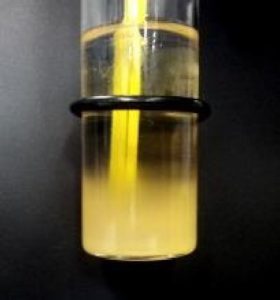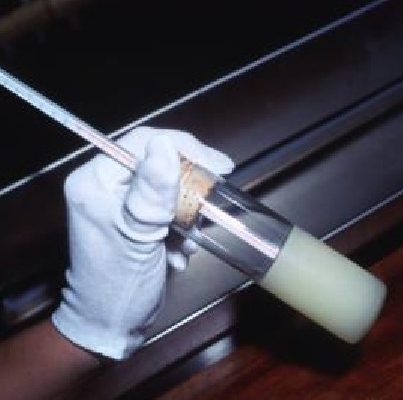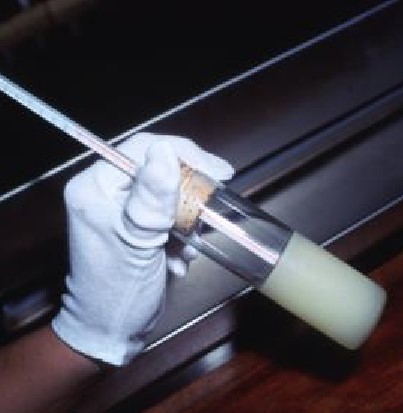With winter approaching it is now an apt time to discuss the Pour Point of lubricants. The pour point of a lubricating oil can be described as the lowest temperature at which the lubricant will flow under specified laboratory conditions. It is often believed that the pour point of a lubricant is the lowest ambient temperature at which the lubricant can be used in a machine, but this is a fallacy.
At best an oil operating at an ambient temperature that is the same as the pour point of the oil, will merely churn at the oil pump until the churning causes an increase in the temperature of the oil. The increased temperature allows the oil’s viscosity to thin down sufficiently so that it slowly begins to flow through the oil passages to the lubricated components. This can take several minutes during which severe damage may be caused to various components due to oil starvation.
Most lubricating oils are still manufactured using paraffinic mineral base oil stocks. Virtually all these mineral base oils contain small amounts of dissolved wax. As the oil is cooled down, the wax begins to separate as crystals. When cooled down further, the wax crystals start to interlock to form a three-dimensional structure that traps the oil in small pockets within the wax structure. When this wax crystal structure becomes sufficiently rigid at low temperatures, the oil will no longer flow. ASTM D97 is the most frequently used test method to determine the pour point of petroleum products.
 To improve (reduce) the pour point of these oils, pour point depressants (PPDs) are added. PPDs do not in any way affect the temperature at which wax crystallizes or the amount of wax that precipitates. They simply ‘coat’ the wax crystals preventing them to interlock and forming three-dimensional structures that inhibit oil flow. Good PPDs can lower the pour point by as much as 40 0 C, depending on the molecular weight of the oil.
To improve (reduce) the pour point of these oils, pour point depressants (PPDs) are added. PPDs do not in any way affect the temperature at which wax crystallizes or the amount of wax that precipitates. They simply ‘coat’ the wax crystals preventing them to interlock and forming three-dimensional structures that inhibit oil flow. Good PPDs can lower the pour point by as much as 40 0 C, depending on the molecular weight of the oil.
While the pour point of most oils is related to the crystallization of wax, certain oils, which are essentially wax free, such as polyalphaolefins (POAs), have viscosity-limited pour points. With these oils the viscosity becomes progressively higher as the temperature is lowered until no flow can be observed. The pour points of these oils cannot be lowered with PPDs. However, due to PAOs’ unique nature, they provide excellent low-temperature viscometrics and very low pour points that cannot be achieved by adding PPDs to mineral oil.
Just as important as pour point (if not more) is Cloud Point. The cloud point of an oil is the temperature at which a cloud of wax crystals start to appear when a sample is cooled under prescribed conditions. Below this temperature, the viscosity of the oil increases exponentially with decreasing temperature. This may well lead to oil pump cavitation in oil circulating systems, even before the pour point of the oil is reached — particularly in systems where the oil pump is positioned higher than the oil reservoir. ASTM D2500 is the most commonly used test method to determine the cloud point of petroleum products.
Considering all the above a good rule of thumb is that the pour point of a lubricating oil should be at least 1 O O C below the lowest anticipated ambient temperature. This will ensure dependable lubrication and better equipment reliability in the long term.


